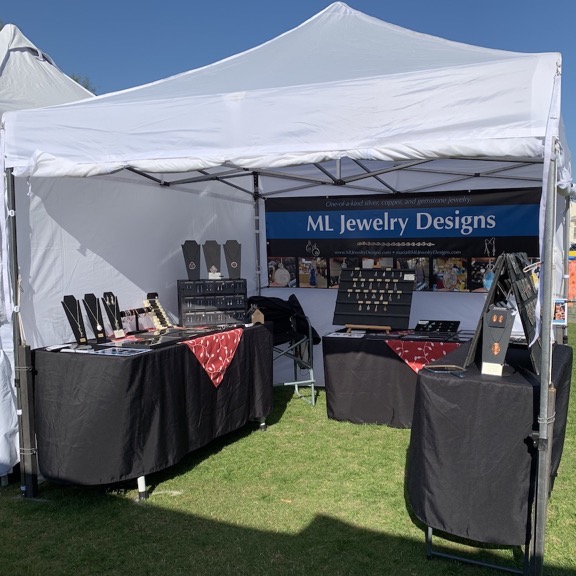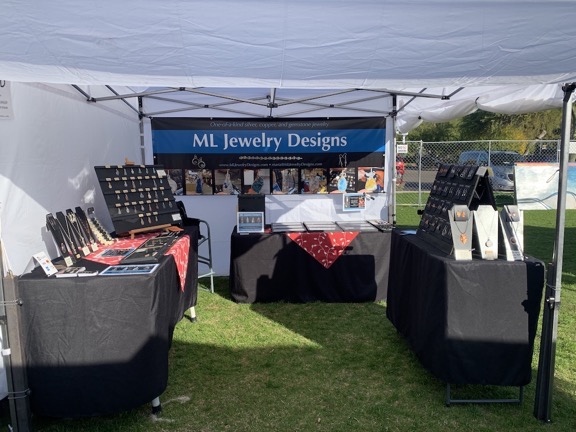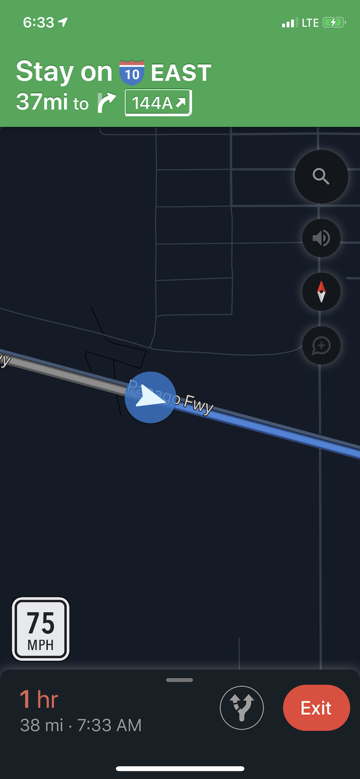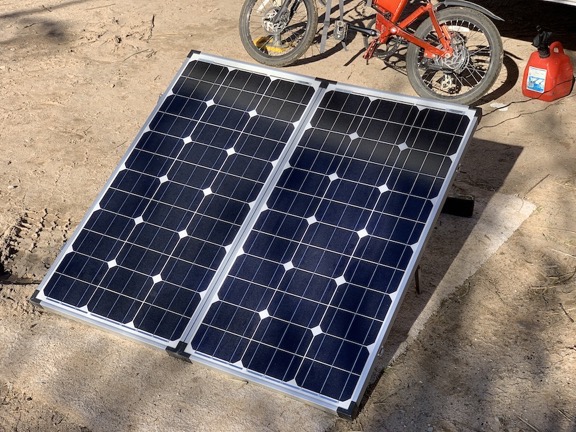I participate in an art show in Phoenix.
I was set up as a jewelry vendor this past Friday through Sunday at the Phoenix Festival of the Arts in Phoenix’s Hance Park.
Hance Park is also known as “the deck park” because it’s the park that sits atop a tunnel where I-10 runs under Phoenix. (It’s a park on the top deck of the tunnel.) It’s a bit of a pain to set up and tear down because they limit the number of vehicles on the deck and if someone selfishly sets up while unloading — rather than unloading, moving a vehicle out of the park, and then setting up — there’s a long wait to set up. Parking outside the park was supposed to be a problem, but I didn’t have any problem at all. I always arrived early enough to get a good spot on the street less than a block away. For tear down, however, I couldn’t get my truck into the park timely so I wound up parking in the nearby library lot and taking my gear through a gap in the fence that someone had opened. It saved me a lot of time, but I had to carry each of my 40-pound tent leg weights separately. I felt it in the morning.
The event included at least 80 vendors, most of which were selling handmade goods. There were a lot of potters and jewelers, some woodworkers and metalworkers, a handful of photographers, and some painters. The rest were making a variety of other handmade items, some of which were impressive pieces of art while others fell into the category of granny crafts. There were also more than a few vendors who shouldn’t have been there at all — folks selling obviously buy/sell merchandise they didn’t made like salt scrubs and salsa and garlic grating dishes. It was a typical mix for an event that was apparently setting a low bar for vendors and lucked out by getting some good ones. I’d say that my work was neither the best nor the worst, which is a spot I don’t mind filling.
Because the booths were set up in quads, we were all able to have our booths open on two sides. Technically, I could have been open on three sides because I was in the last row, which just had paired booths. But I went with two sides and had a nice walk-through booth. I put my pendants on the back table, logically with the cases of stones that I use to make pendants. I had earrings in three places, including the back of my large hinged display on an island in the open corner of the booth.

My initial booth setup on the first day of the show.
Oddly, the only thing I sold that day were earrings — six pairs. No pendants, no bracelets, no rings, no stones. I suspected it was because of the booth layout so on Saturday morning, I reorganized to move the pendants closer to the front of the booth and reorganize the earrings to both sides of the hinged display.

My booth setup for the second and third day of the show.
I’d put up my shade extension on Saturday morning but quickly realized that it was causing people to walk around the front of my booth instead of coming in. So I pulled it down. People came in. (Go figure.) From that point on, I did relatively well, selling a mix of pendants, earrings, and rings.
I was satisfied with sales at the event, but not thrilled. All my costs were covered and I made a little profit, but I’m not convinced that my time wouldn’t have been been better spent at camp, making more jewelry in my mobile shop. As it was, I sold out on all of my most popular earring styles; I’ll definitely need to make a lot more for my next show in January.
I’d been accepted to two shows that weekend but had chosen this one because it was a three-day event instead of a two-day event. I think it was also a little cheaper. Next year, I might try the other show, which I think was in Tempe, AZ.
As an event for people wanting something to do on a December weekend in Phoenix, I recommend it. With art vendors, mural painting, live music, and food trucks, it was a great way for people — including families — to spend an afternoon.





